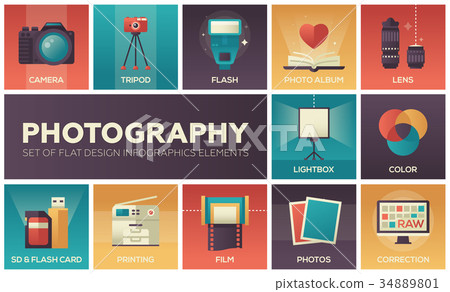What Every Professional Photographer Should Understand About Illumination
What Every Professional Photographer Should Understand About Illumination
Blog Article
please click the following internet site Created By-Greenwood Covington
As a professional photographer, you understand that illumination can make or break your pictures. Understanding the nuances of both all-natural and fabricated light is vital for catching the state of mind and clarity you go for in your work. Whether you're chasing after the excellent gold hour radiance or tweak your man-made arrangements, grasping these aspects can raise your digital photography significantly. Yet there are common mistakes that many overlook, and identifying them can transform your strategy to every shoot. Allow's explore what you may be missing out on and exactly how it can affect your outcomes.
Understanding Natural Light
Understanding natural light is important for any photographer looking to boost their work. It's the structure of wonderful digital photography, affecting mood, tone, and clarity. When photographer for professional headshots fire outdoors, pay attention to the time of day. The golden hour-- shortly after dawn and prior to sunset-- supplies soft, warm light that can change ordinary scenes right into sensational pictures.
Modern headshots of cloudy days. Cloud cover diffuses sunlight, creating a soft, also light that's excellent for portraits and macro photography. You'll find colors pop in this type of lights without extreme darkness.
Positioning matters, as well. Always consider your subject's alignment to the light. If the sunlight's behind your topic, you might end up with a silhouette, which can be significant however mightn't be what you want. Alternatively, direct sunlight can produce uncomplimentary shadows.
https://zenwriting.net/apryl78carl/easy-ways-to-enhance-your-portrait-photography , altering your viewpoint can yield impressive outcomes. Usage all-natural reflectors, like water or sand, to bounce light onto your subject, adding measurement.
Mastering Artificial Light
Mastering man-made light is vital for professional photographers who want to take their skills to the following degree. Whether you're utilizing speedlights, workshop strobes, or constant lights, recognizing how to control these resources can considerably enhance your images.
Beginning by acquainting on your own with the fundamentals of light top quality, instructions, and shade temperature level. Trying out various modifiers like softboxes, umbrellas, or grids to manage the gentleness or violence of the light.
You'll discover that soft light often develops complementary outcomes, while harsher light can add dramatization and deepness. Do not shy away from shadows; they can improve the three-dimensionality of your subjects.
Pay attention to the placement of your lights. A light located as well close to your subject can produce unflattering outcomes, while also away can lead to an absence of detail. Use a light meter or your camera's histogram to ensure you're subjecting properly.
Last but not least, keep in mind that man-made light can be blended with ambient light for creative impacts. Balancing these resources might take technique, but once you grasp it, your digital photography will truly beam.
Strategies for Various Circumstances
When you enter various capturing circumstances, adapting your lighting techniques is important for catching the most effective photos. For outdoor pictures, use the gold hour-- morning or late afternoon light-- to soften darkness and boost skin tones.
If it's an extreme noontime sunlight, consider using a reflector to bounce light back onto your topic or look for shaded locations for a much more also exposure.
In low-light scenarios, like interior events, raise your ISO and make use of a large aperture to allow in even more light. A tripod can help remove video camera shake, enabling longer exposures without blurring.
If you're shooting at night, trying out off-camera flash to produce dynamic illumination and depth in your photos.
For product digital photography, utilize diffused lighting to stay clear of harsh representations. Softboxes or light camping tents can assist achieve this impact.
When photographing landscapes, take into consideration the instructions of light and time of day, as it can dramatically change the mood of your shot.
Always be ready to adjust your settings and positioning based upon the circumstance, as flexibility is key to grasping illumination in photography.
Conclusion
To conclude, understanding lighting is crucial to boosting your digital photography skills. Accept all-natural light's elegance throughout golden hour, and don't shy away from explore artificial light strategies. By adapting your strategy to various situations, you'll record spectacular photos that resonate with feeling and clearness. Bear in mind, the right lights can change a common shot into something amazing, so keep exercising and fine-tuning your understanding of both natural and synthetic light. Satisfied shooting!
